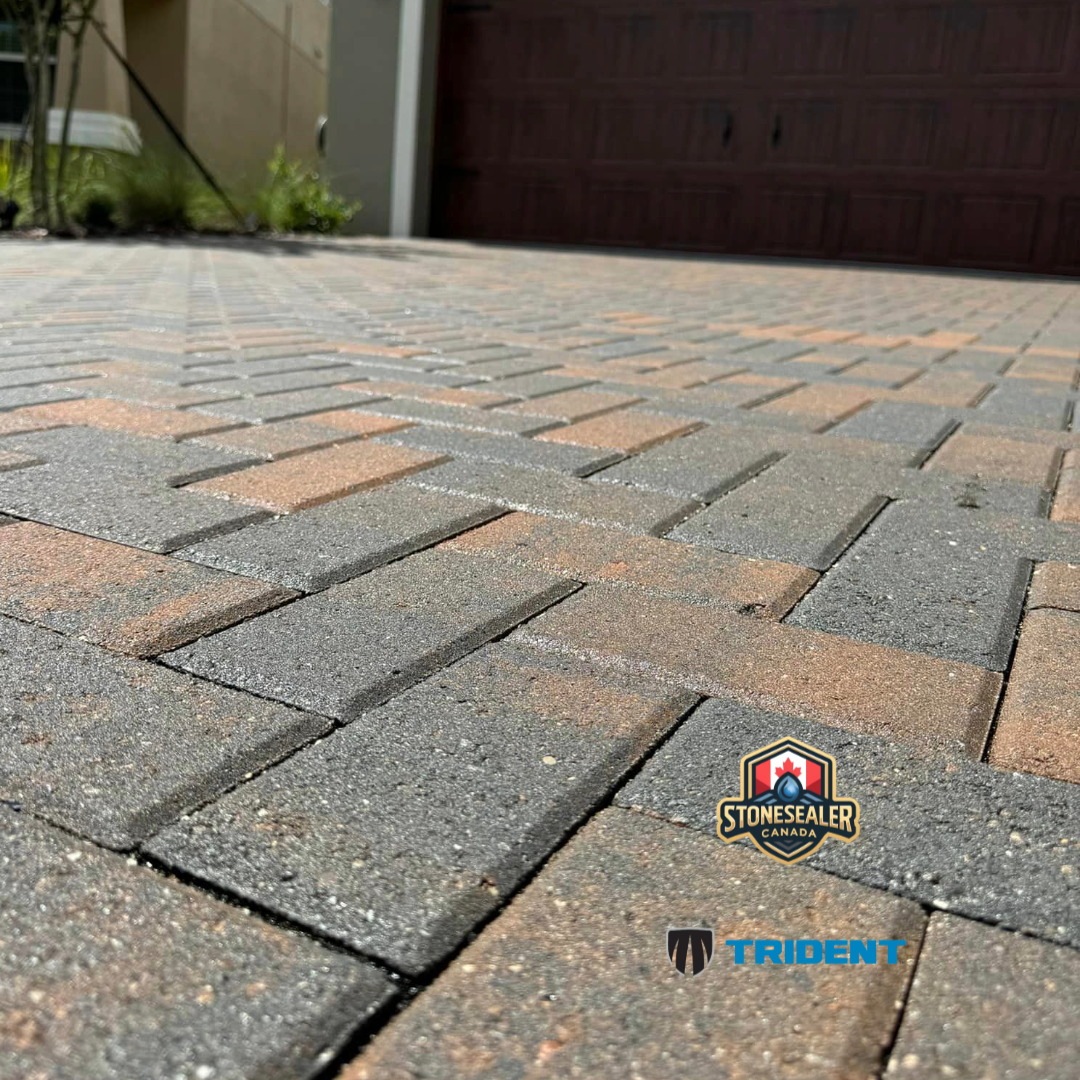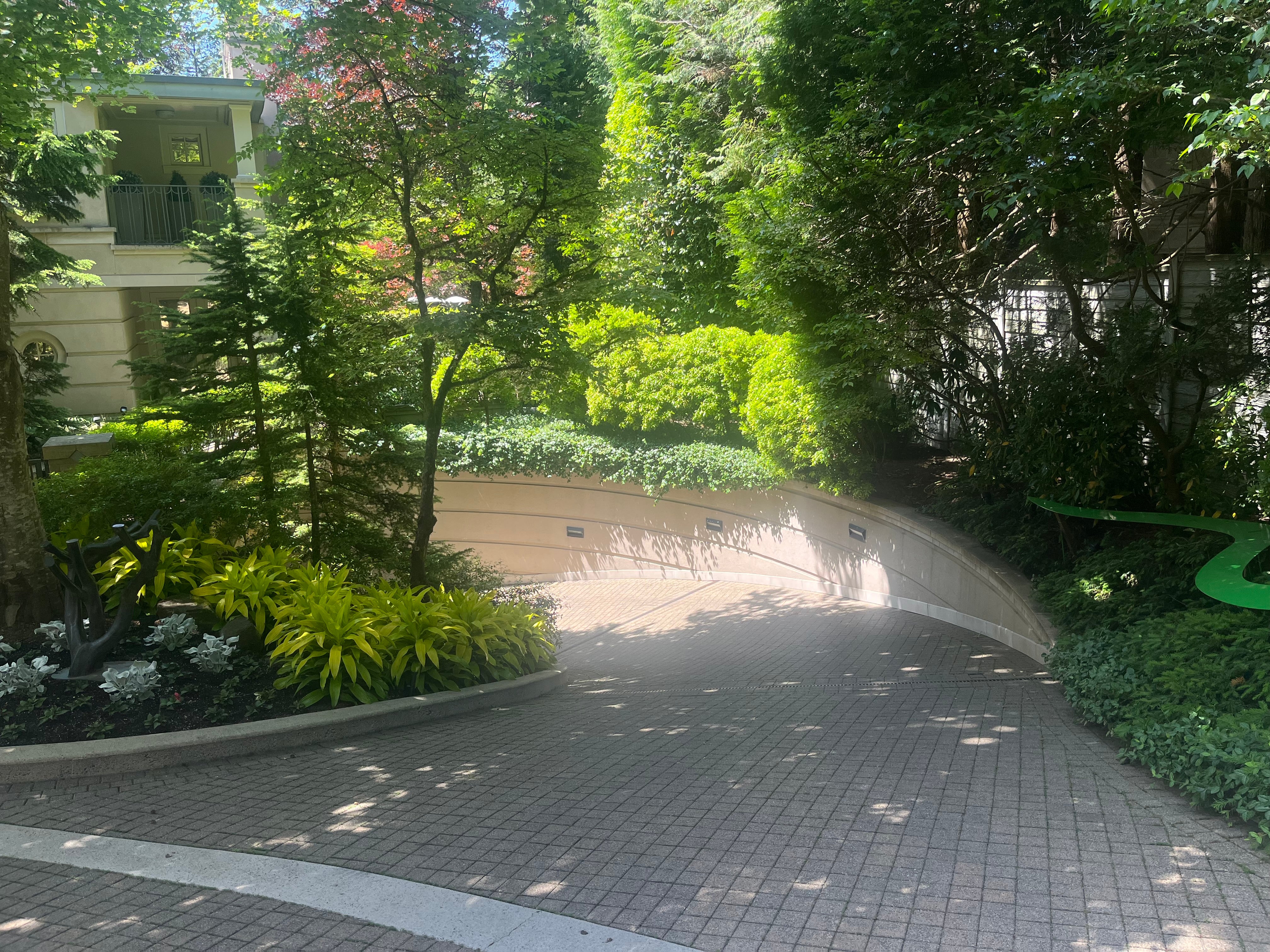Why Trident SEK Joint Sand is Better Than Polymeric Joint Sand in Canada
What is Trident SEK SureBond Joint Sand and How Does it Compare to Polymeric Jointing Compounds?
Trident SEK SureBond jointing materials are a quantum shift in the way interlocking pavers are sand jointed, and have massive implications for the Canadian market. These Trident joint sands are the only ASTM C144 rated joint sands that are both free of any cements and resins, as well as available in architecturally prevalent colours for any style.
No resin? Doesn't that mean the joints won't last?
When used in the whole Trident SEK SureBond system for paver restoration or installation, these joints will stay rigid and strong for typically 5 years+ where poly joints in Canada commonly degrade in the 2-3 year mark.
Trident interlocking joint sands get their strength from the Trident urethane sealer, and are solid all the way to the bottom of the joint as with the C144 ASTM rating the grits are a proper size to let stabilizing sealer flow all the way to the bottom of the joint. We recommend Trident Hurricane CAT 5 for maximum strength and resistance.
So why is the Trident joints so much better? Speed.
Not only are Trident SEK joints stronger when used with a 2 part urethane like CAT 5, but they go in faster and have more flexibility for installation conditions
Poly Joint Timeline and Conditions:
The typical polymeric sand and acrylic gloss finish for pavers takes a minimum of 4 days, and all 4 days need to be in a perfect weather pattern where there is 0 moisture, not too hot, and not windy. Good luck finding these conditions anywhere in Canada, as the climate changes by the minute all the way across the country, so your driveway or your clients project will require nobody to be on it for the better part of the week and your jobs per week are very low for 1 crew. Day 1, clean. Day 2-3 let dry, Day 4, poly sand by pushing in with a broom, compacting with a plate tamper, and then adding another layer of sand and compacting again, finally soak the surface to activate the resins. Day 5-6 let dry again. Day 7, apply acrylic sealer if perfectly dry and no new dirt has fallen, but only if the temperature is under 25C. Not a great method in my professional opinion.
Trident SEK SureBond System Timeline and Conditions:
The Trident paver restoration system for cleaning, sanding, and sealing interlock bricks in Canada takes less than 24 hours for a Trident certified contractor to perform. Day 1, strip old sealer, clean, and wet sand. Day 2, Seal, even if still damp. The reason this is so fast and forgiving is it does not need to be perfectly dry and has a much more broad temperature range. Because there is no resin or cement in the SEK Sure Bond joint sands the joints can be filled without drying after cleaning, and will actually be pushed in with water, meaning no compactor or second application. Simply push it in with low pressure water, then come the next morning to seal, even if still slightly damp below the surface. The next morning, flood it with hurricane CAT 5 or Cyclone depending on your desired finish and the pavers will be ready for use after 12 hours. Much more convenient and efficient, and it even lasts longer, what's not to love.
How long does Trident system last comparatively?
The Trident restoration system on average lasts twice as long as polymeric sand and solvent based acrylic before complete failure. This is because the majority of the sealer used in the Trident SEK system is saturated into the stone with only a very thin hard shell at the surface for gloss. Alternatively, the traditional polymeric sand and acrylic sealer method is almost all at the surface and easy for a contractor to not install the polymeric correctly leaving a haze or a poor bond.


